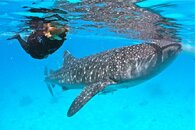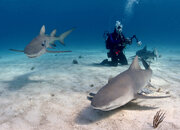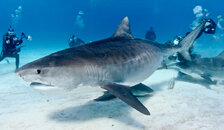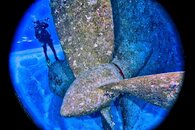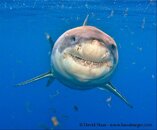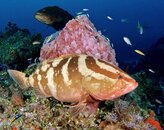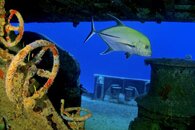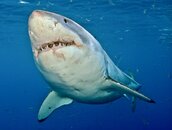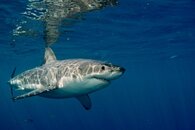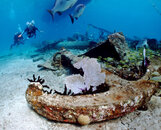On the other hand, the shallow depth of field inherent to large sensors actively impairs image quality when shooting through domes, forcing you into very small apertures and associated compromises. Likewise for macro; where a TG-6 may have the whole nudibranch in focus, an EOS-5D will give you just the rhinophores, with the rest in blur. There is also the matter of shutters - most interchangeable lens use a focal plane curtain shutter, which limits their flash sync speed to something between 1/160s to 1/250s, with a few models going to 1/320s and a very select few reaching 1/500s (to the best of my knowledge, the only cameras to do this are Nikon D70 and Sony A1). On the other hand, fixed-lens cameras typically employ lens-plane leaf shutters, which allow flash sync all the way to 1/2000s or even 1/4000s without resorting to HSS. This is particularly important underwater when you're shooting into the sun.
It's also worth pointing out that the current camera market is a lot more complex than compact vs. DSLR. Historically, yes, it was true - the dividing line was that SLRs had dedicated phase-detection autofocus arrays, whereas compacts relied on contrast detection, which is a lot slower and less reliable. However, today, you have:
- Fixed lens compacts, which, in turn, come in several categories:
- 1" or smaller sensor normal zoom cameras, such as Canon G7 X series and Sony RX100 series
- 1" or smaller sensor ultrazoom/bridge cameras, such as Sony RX10 series or Nikon Coolpix P series
- APS-C or four thirds zoom or prime lens cameras, such as Canon G1 X series, or Panasonic LX100 or Fujifilm X100V
- Full-frame fixed lens compacts, typically with a prime lens, such as Sony RX1R or Leica Q
- Mirrorless cameras, which also come in several sensor sizes:
- Micro Four Thirds, primarily from Olympus (now OM Digital) and Panasonic
- APS-C, mostly from Sony and Fujifilm, but also from Canon (seemingly orphaned M mount) and Nikon (two models using their new Z mount)
- Full frame - that's where most of the innovation is happening right now, with Sony, Canon, Nikon and Panasonic releasing new models as fast as they can
- Medium format - largely the domain of Fujifilm's G mount cameras
- DSLRs, which, having stagnated for a while now, still come in a range of sizes:
- APS-C (or DX in Nikon-speak) and minor variations with 1.4x or 1.6x crop instead of the standard 1.5x
- Full frame
- Medium format (mostly Pentax 645)
...and within each of those categories you have a range of different
types of cameras, such as those targeting sports, or landscapes, or portraits, or whatever. The PDAF/CDAF divide is no longer there either, as in almost every category you can have some cameras that use one or the other, to varying degrees of effectiveness. Nikon generally has the best autofocus in SLRs, while Sony rules the roost in mirrorless, although Canon and Nikon are playing catch-up there. Olympus isn't bad, but Fujifilm is lagging, and Panasonic does not use PDAF at all, relying on what they call 'depth from defocus', which is basically a fancy name for slightly more intelligent CDAF, both in their M43 and full-frame cameras.
One of the most popular cameras among underwater photographers is the DX (APS-C) Nikon D500. Many prefer it to its bigger full-frame cousin, the D850, specifically because the bigger sensor brings too much baggage.
A note specific to the Canon G7 X series - these cameras use the same sensor as the Sony RX100 series (as in, Canon is buying sensors from Sony rather than making their own), but they do not incorporate Sony's hybrid AF (on-sensor PDAF) technology, relying on contrast detection only, which makes them significantly slower to focus. Moreover, while G7 X II had one-touch custom white balance, an immensely useful feature for video and, to a lesser extent, natural light photography, the G7 X III lost this capability - now it takes several button presses and navigating through menus.



